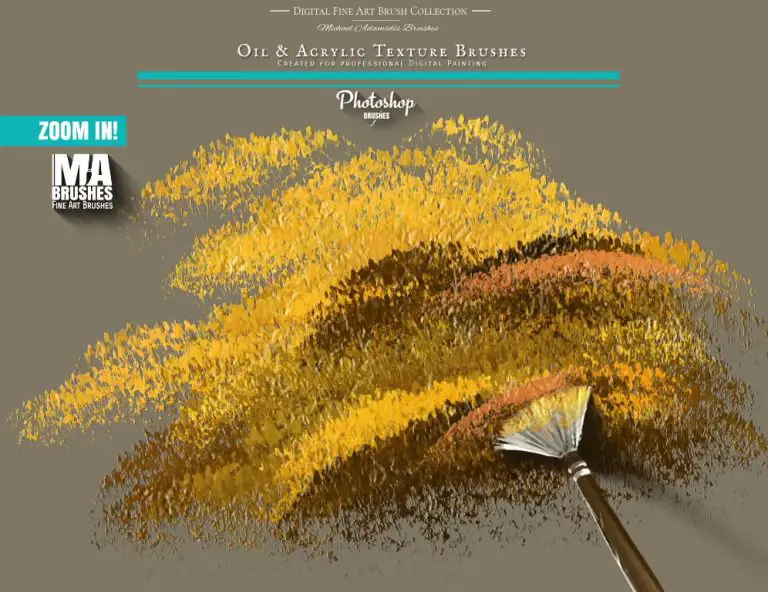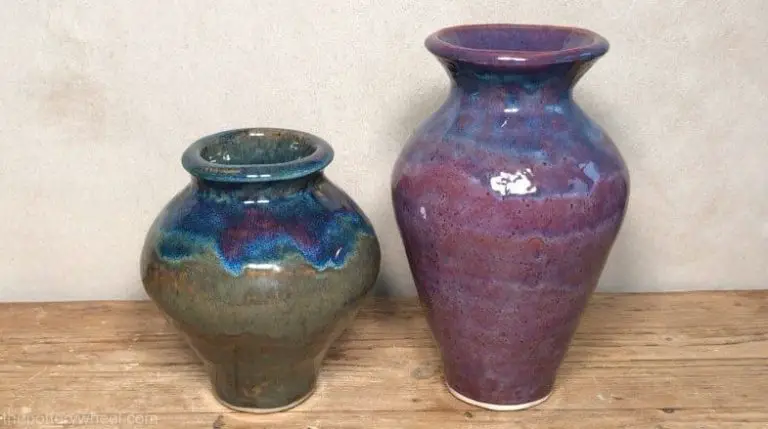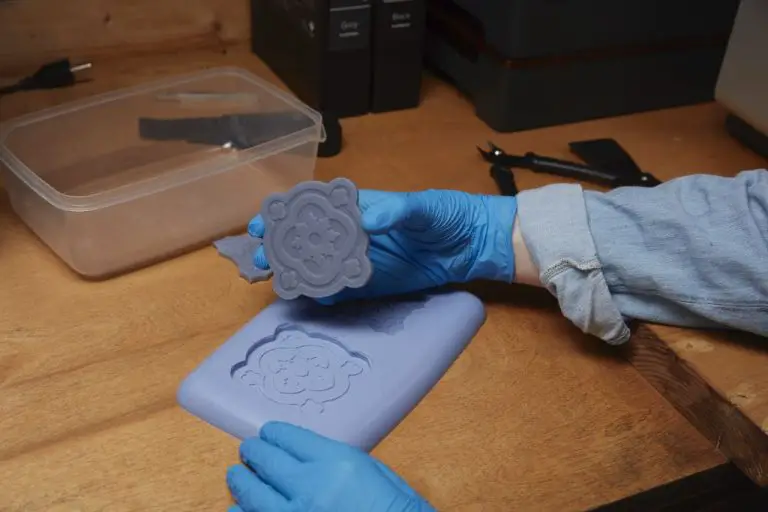What Do You Call A Person Who Models Things Using Clay?
Clay modeling is the art of manipulating and shaping clay to create three-dimensional objects and figures. It is one of the oldest and most universal art forms, dating back over 25,000 years to early human civilizations. Clay is an ideal medium for sculpting and molding as it can be easily shaped when wet, and then hardened by firing or drying. The techniques used in clay modeling allow artists to craft intricate works of art, pottery, and figures.
This ancient practice can be both decorative and functional. Clay artists make sculptures, pottery, tiles, and more. Their creations may have a decorative purpose, like a clay vase, or serve a practical function, like clay cookware. The versatility of clay makes it a popular choice among hobbyists and professional artisans alike.
In this article, we will explore the world of clay modeling, including different terms for clay modelers, techniques, and notable artists who work in this medium. Whether sculpting portrait busts, throwing pots, or hand-building clay creatures, there is an incredible diversity found in clay work. Let’s dive deeper into this tactile and creative craft.
Clay Modeler
The most widely used and recognized term for someone who creates artwork using clay is a clay modeler. This term refers specifically to artists who sculpt figures, objects, and shapes using clay as their primary medium. Clay modelers utilize their hands and simple tools to manipulate clay into a desired form.
The process of clay modeling involves preparing the clay by wedging or kneading it until it reaches an ideal consistency. The modeler then shapes the clay using hands and basic sculpting tools, gradually molding it into the intended figure or object. Details are carved and refined using clay loops, rubber tools, and wood sticks. The modeler must work carefully to maintain the structural integrity of the clay artwork. Once completed, a clay model is often fired in a kiln to harden it before painting or glazing.
Clay modeling is one of the most ancient and universal art forms, with evidence of small clay figures sculpted by hand dating back over 20,000 years. The term clay modeler connects today’s artists to these ancient roots of human creativity. Whether creating art, prototypes, or figures from their imagination, clay modelers keep this time-honored tradition alive.
Sculptor
The term “sculptor” can also be used to refer to someone who models things with clay. Sculptors use a variety of techniques and mediums to create three-dimensional works of art. While sculptors may work with stone, metal, wood and other materials, those who focus on clay modeling may also be called sculptors.
The key difference between referring to a clay modeler as a “sculptor” versus a “ceramicist” or “potter” is that sculptor has a more general meaning. Sculptors work in diverse mediums beyond just clay to create sculptures. However, for those whose sculpture work involves specifically shaping figures, busts, animals, abstract forms, and other artwork from clay, sculptor would still be an applicable term even if clay is their sole medium.
Sculptors who model with clay utilize an array of techniques from hand-building to wheel-throwing to molding and casting. The works they create may be decorative objects, vessels, or simply artistic sculptures not intended for any practical use beyond aesthetic appreciation. While sculptor has a broad definition, calling a clay modeler a sculptor is accurate, especially if they create sculptural artwork as opposed to functional pottery.
Ceramicist
The term “ceramicist” refers specifically to an artist who works with ceramic clays and glazes to create pottery, tile, porcelain and other objects. Ceramicists specialize in working with clay that requires extremely high firing temperatures, as opposed to lower temperature earthenware clays used by some potters and sculptors.
Ceramic clays are made from fine particle ingredients like kaolin, quartz, and feldspar, that fuse and vitrify at high temperatures. When fired at over 1200°C, the clay undergoes a molecular change and becomes a non-porous ceramic material. Ceramicists must have expert knowledge of the specialized clays, chemicals, glazes and firing methods used for ceramics. Their artistry comes from creatively using the technical processes to make functional and decorative works.
While ceramic art has a long history dating back thousands of years, the contemporary field of ceramic arts includes everything from potters throwing vessels on the wheel, to ceramicists hand-building abstract sculpture, to those incorporatingdigital fabrication and cutting-edge techniques. Many ceramicists today push the boundaries of traditional ceramics, blending it with mixed media, technology, and conceptual approaches. But at its foundation, the ceramicist begins with manipulating, forming and transforming ceramic clay into a finished ceramic object.
Potter
The term “potter” refers specifically to an artist who creates pottery and ceramic wares. Potters shape clay vessels and objects on a pottery wheel or using hand-building techniques. They specialize in making functional or decorative pots, bowls, plates, cups, vases, and other earthenware items out of clay.
Potters create both utilitarian pieces like bowls and mugs for everyday use and sculptural works for display. Their clay objects may be left natural, painted, or glazed before firing in a high-temperature kiln. While “potter” is often used interchangeably with “ceramicist,” potters focus on pottery while ceramicists work across all types of ceramics. Some potters also make porcelain items, however porcelain has different working properties than clay.
Historically, pottery was essential for tasks like storing, cooking, and serving food. Pottery artifacts provide archaeologists insights into ancient civilizations. Today, many potters around the world still handcraft traditional pots and porcelain for ceremonial and decorative purposes. Studio potters also create one-of-a-kind artworks, customized dinnerware sets, and other unique pottery pieces.
Clay Artist
The term “clay artist” can refer to anyone who creates art using clay as their primary medium. It’s a more general and broad term that encompasses sculptors, ceramicists, potters, and other types of clay workers. Clay artists utilize clay to make both functional pieces like bowls, vases, and tiles, as well as non-functional sculptures and wall art.
While a potter may focus specifically on crafting vessels and ceramic ware, and a ceramicist may concentrate on glazing and firing techniques, a clay artist explores the endless creative possibilities of clay. Clay artists experiment with handbuilding, throwing, molding, casting, and modeling clay to bring their artistic visions to life in 3D. The term “clay artist” allows for a wide range of approaches, styles, and finished pieces. It gives clay workers the freedom to follow their creative instincts and make abstract sculptures, figural works, tiles, reliefs, jewelry, and more without being confined to one particular technique or final product. Whether they are creating avant-garde pieces or traditionally crafted pottery, clay artists share a passion for the versatility and sculptural nature of clay.
Modeler
The term “modeler” on its own can refer to someone who works with clay, but it is less common than some other terms. Modelers shape sculptures, figures, ceramic pieces, and more using clay. The process of shaping clay is called modeling.
Modelers may make prototypes, concept models, or finished artworks using clay. Some modelers specialize in sculpting the human figure. Architectural modelers may use clay to create detailed scale models of buildings and other structures. Modelers build up their creations by hand, using clay sculpting and shaping techniques.
Clay modeling requires an understanding of the properties and limitations of clay as a medium. Modelers must have strong fine motor skills and spatial reasoning abilities. Attention to detail and creativity are also important skills for clay modelers. Their knowledge of various modeling techniques and ability to visualize the clay sculpture within the form is critical.
Techniques
Clay modelers use a variety of techniques and methods to shape and form their creations. Here are some of the main techniques used:
Sculpting
Sculpting involves directly manipulating the clay with your hands and tools to carve, pinch, smooth, and shape forms. This allows the artist to have intricate control over the details and expressiveness of the work.
Throwing
Pottery throwing involves using a pottery wheel to center and form clay vessels and other round objects. The modeler centers the clay on the wheel then pushes and pulls against it as it spins to form bowls, vases, cups, and more.
Molding
Molding uses molds, forms, or casts to create consistent and reproducible shapes. The clay is pressed into an existing mold or form then removed to retain the shape. This allows for mass production of ceramic items.
Handbuilding
Handbuilding refers to techniques like pinch pots, coil building, and slab construction to manually form clay objects without the use of a wheel. The clay is shaped by hand using tools and the modeler’s fingers.
Notable Clay Modelers
Auguste Rodin was perhaps the most renowned sculptor of the 19th century. Though he worked in various materials, Rodin is famous for his expressive clay models like The Thinker and The Kiss. Rodin’s clay models were often used to create monumental bronze or marble sculptures.
The contemporary American sculptor Paul Dresang creates whimsical and figurative clay sculptures of people and animals. Dresang builds elaborate dioramas from his small hand-formed clay models.
Ursula Morley Price is known for her life-sized clay models of horses and other animals. She focuses on capturing the anatomy and spirit of her subjects. Morley Price’s clay models are used to cast large bronze sculptures.
Mary Spencer is an acclaimed clay sculptor from the UK. Spencer hand-sculpts intricate flowers, fruits, and organic shapes from porcelain clay. Her realistic botanical sculptures highlight the fragile beauty of nature.
Conclusion
A person who models things using clay has many names, but most commonly is called a sculptor, ceramicist, or clay modeler. While these terms have slight differences, they all refer to artists who shape clay into artistic forms and figures. The craft requires creativity and skill to mold the clay by hand or using tools. Clay modeling dates back thousands of years to early human civilizations. Today it remains a popular art form for hobbyists and professionals alike. Clay sculptors work in a variety of genres from realism to abstraction using modeling techniques like carving, coil building, slabs, throwing, and casting. Their creations are then often fired in a kiln to harden and preserve the artwork. Clay modeling allows immense creative freedom to bring ideas and images to life in 3D. Those who work in the medium find it enjoyable and rewarding thanks to the tactile, hands-on nature of the process. Overall, clay modelers are passionate artists who bring unique works of art into the world through their ability to shape clay into meaningful forms.



